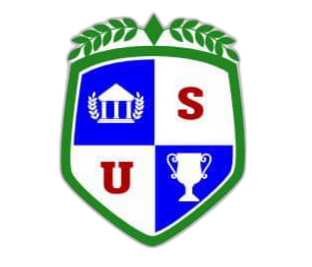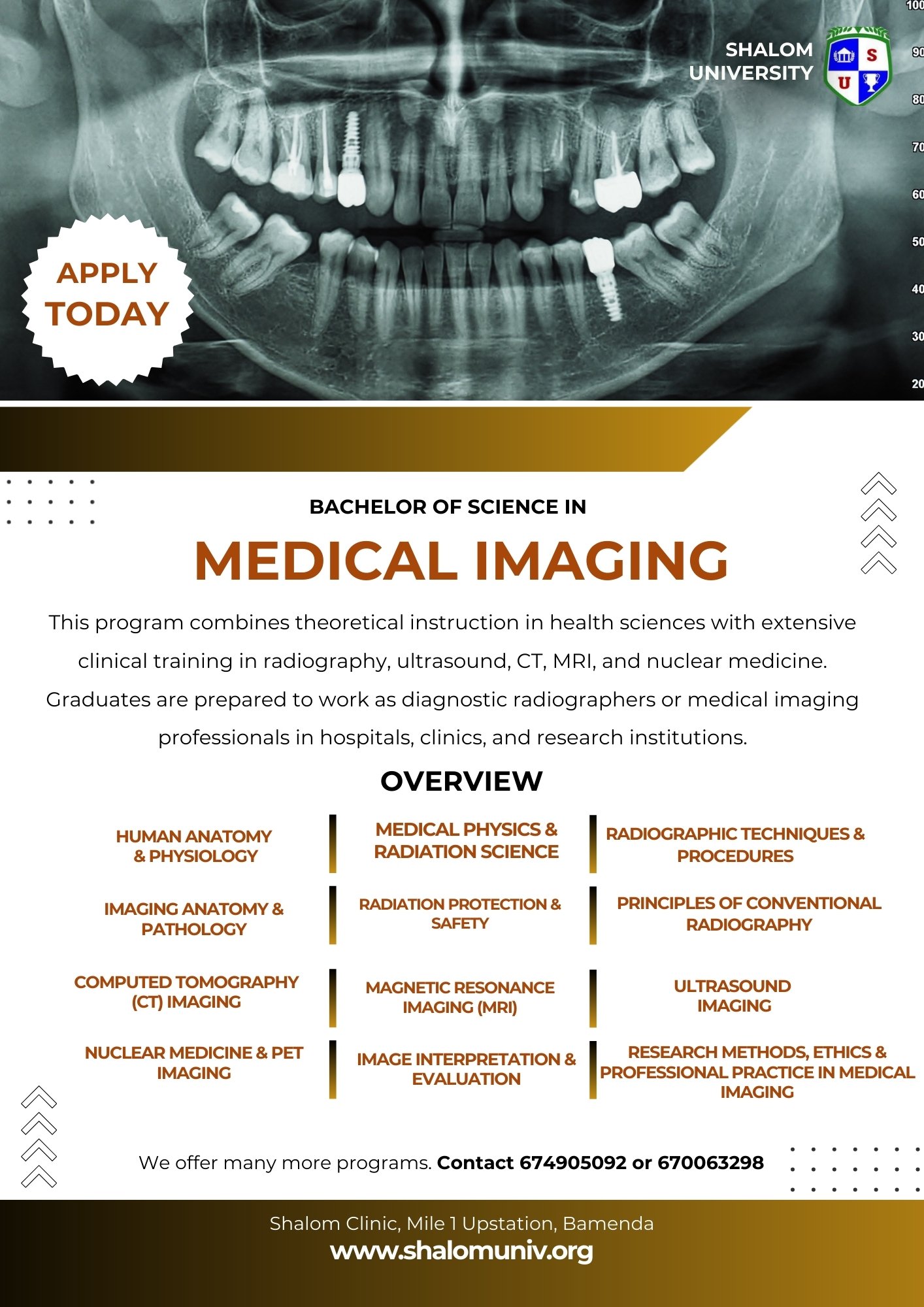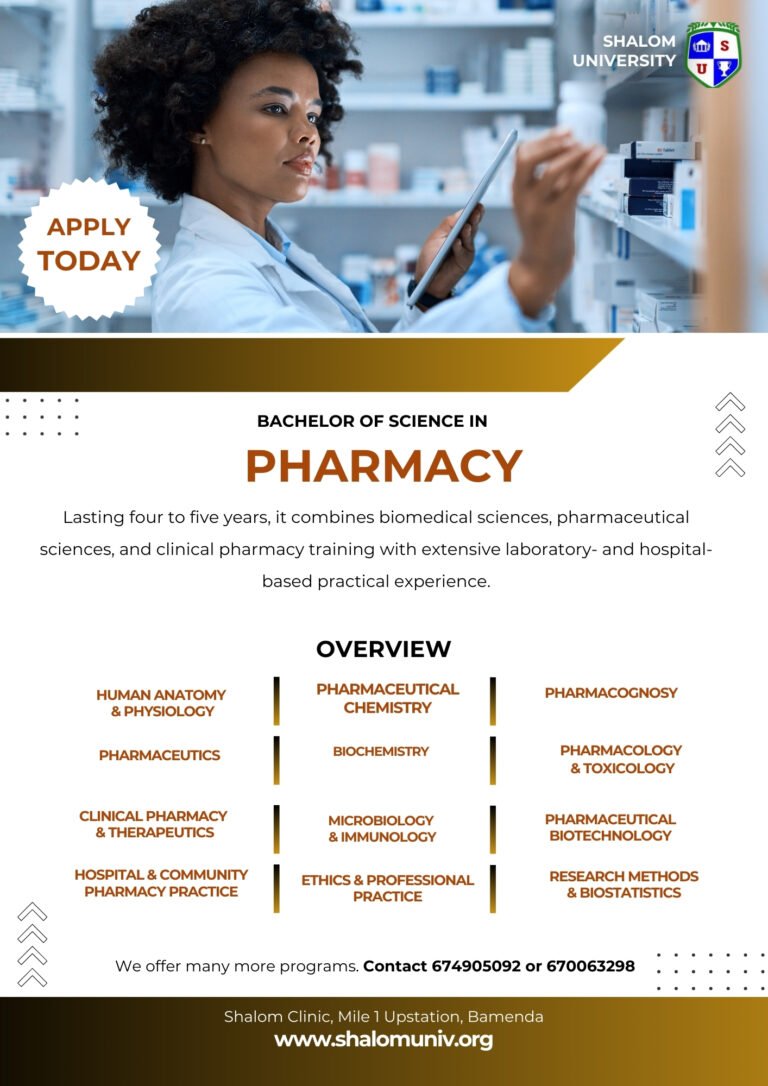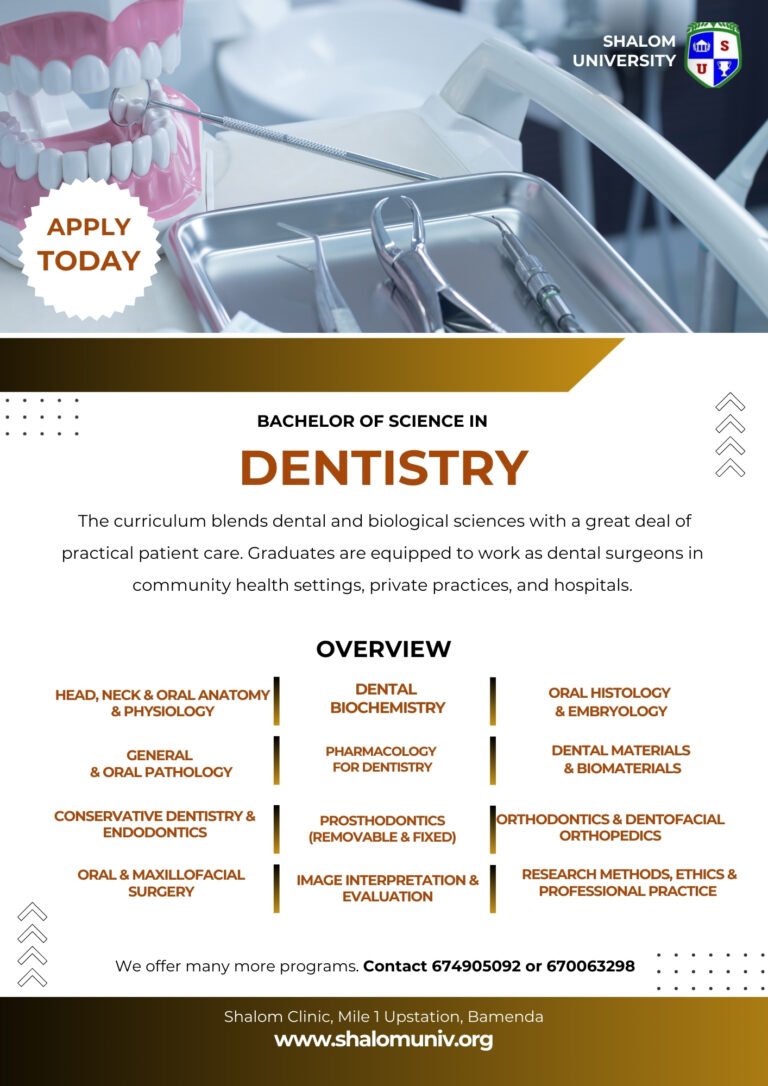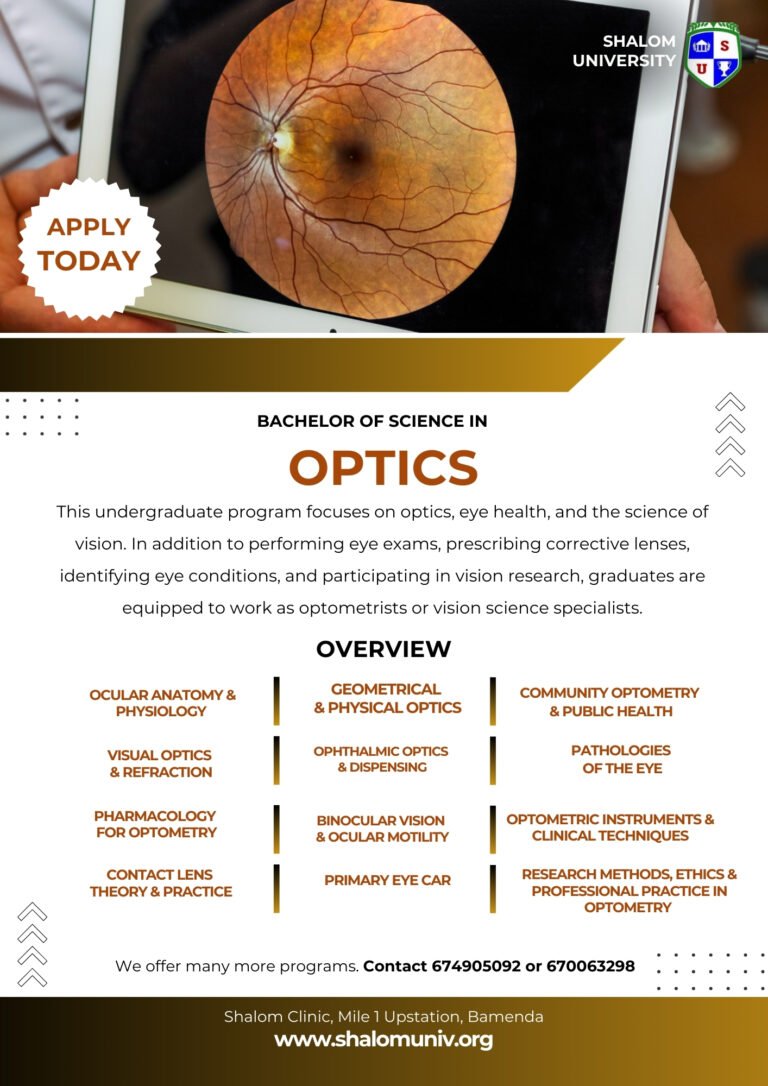Medical imaging plays a central role in modern healthcare, allowing doctors to see beyond the surface and make accurate diagnoses that save lives. From X-rays to MRI scans, radiologic technology is the foundation of preventive medicine, clinical care, and medical research.
At Shalom University, the Bachelor of Science in Medical Imaging program equips students with the knowledge, technical skills, and ethical grounding to become leaders in diagnostic radiology and advanced imaging sciences. The program blends theory with hands-on clinical practice, ensuring graduates are fully prepared to support patient care and medical decision-making.
Below is a closer look at the core modules that make this program a transformative pathway into the medical imaging profession.
Human Anatomy & Physiology
Medical imaging starts with a deep understanding of the human body’s structure and function. This course emphasizes the musculoskeletal, cardiovascular, respiratory, and nervous systems, with special attention to anatomical regions commonly visualized in diagnostic imaging.
Medical Physics & Radiation Science
Radiology is built on physics. This module introduces the principles of radiation, electromagnetic waves, and nuclear physics, all essential for understanding how imaging modalities such as X-rays, CT, and MRI function.
Radiographic Techniques & Procedures
Students learn the art and science of patient positioning, exposure factors, and radiographic protocols. This course ensures that images are of the highest diagnostic quality while prioritizing patient comfort and safety.
Imaging Anatomy & Pathology
Interpreting medical images requires not only recognizing anatomy but also detecting abnormalities, lesions, and disease progression. Students develop the ability to differentiate normal anatomy from pathologic findings on radiographs, CT scans, and MRIs.
Radiation Protection & Safety
Safety is paramount in radiology. This subject trains students on radiation dose management, shielding techniques, safety regulations, and ethical responsibility in protecting patients, staff, and self.
Principles of Conventional Radiography
Conventional radiography remains the backbone of diagnostic imaging. This course covers plain film radiography, fluoroscopy, and contrast studies, giving students strong foundational skills before progressing to advanced imaging techniques.
Computed Tomography (CT) Imaging
CT scanning is indispensable for detecting trauma, tumors, and internal diseases. Students gain in-depth training on cross-sectional anatomy, CT physics, protocols, and image reconstruction.
Magnetic Resonance Imaging (MRI)
MRI provides detailed soft-tissue imaging without radiation. This module explores magnetic fields, radiofrequency signals, and pulse sequences, alongside practical training in MRI scanning procedures.
Ultrasound Imaging
Non-invasive and radiation-free, ultrasound is vital for obstetrics, cardiology, and abdominal imaging. Students learn scanning techniques, sonographic anatomy, and interpretation of ultrasound images.
Nuclear Medicine & PET Imaging
This advanced course explores functional imaging using radioactive tracers, such as PET scans, which are essential in oncology, cardiology, and neurology. Students study nuclear physics, radiopharmaceuticals, and safety in nuclear medicine practice.
Image Interpretation & Evaluation
Producing an image is only half the job—evaluating it is equally critical. This module trains students in systematic image analysis, diagnostic accuracy, and communication of findings to physicians and healthcare teams.
Research Methods, Ethics & Professional Practice in Medical Imaging
The program emphasizes evidence-based practice, ethical decision-making, and professionalism. Students also gain research skills in statistics, data analysis, and critical appraisal to prepare them for postgraduate study or advanced clinical practice.
Career Opportunities in Medical Imaging
Graduates of Shalom University’s BSc in Medical Imaging are prepared for careers as:
- Radiographers in hospitals and diagnostic centers.
- Imaging specialists in CT, MRI, ultrasound, or nuclear medicine.
- Radiation protection officers.
- Academic instructors and researchers.
- Healthcare leaders in radiology departments.
With global demand for radiology professionals rising, this program offers both local and international career prospects in public and private healthcare.
Why Choose Shalom University for Medical Imaging?
- State-of-the-art imaging labs and clinical training partnerships with hospitals.
- Comprehensive curriculum covering both foundational and advanced imaging techniques.
- Strong focus on ethics, safety, and professionalism.
- Research-driven learning to prepare graduates for innovation in medical technology.
- Community-focused training to improve diagnostic imaging access in underserved regions.
Learn more about admissions and curriculum details on the official Shalom University website.
Frequently Asked Questions (FAQ)
Q1: How long does the BSc in Medical Imaging take at Shalom University?
A: The program typically takes four years of full-time study, including clinical rotations and practical training.
Q2: What are the entry requirements for Medical Imaging?
A: Applicants should have a science background (biology, physics, and chemistry) at the secondary level. International applicants may have additional requirements.
Q3: Does the program provide hands-on training?
A: Yes, students undergo practical rotations in radiology departments, gaining real-world experience with X-ray, CT, MRI, ultrasound, and nuclear medicine technologies.
Q4: What career opportunities are available after graduation?
A: Graduates can work as radiographers, imaging specialists, research assistants, or healthcare managers in radiology.
Q5: Why choose Shalom University for Medical Imaging studies?
A: The program offers modern facilities, global career relevance, and a research-focused curriculum, ensuring graduates are job-ready and future-focused.
